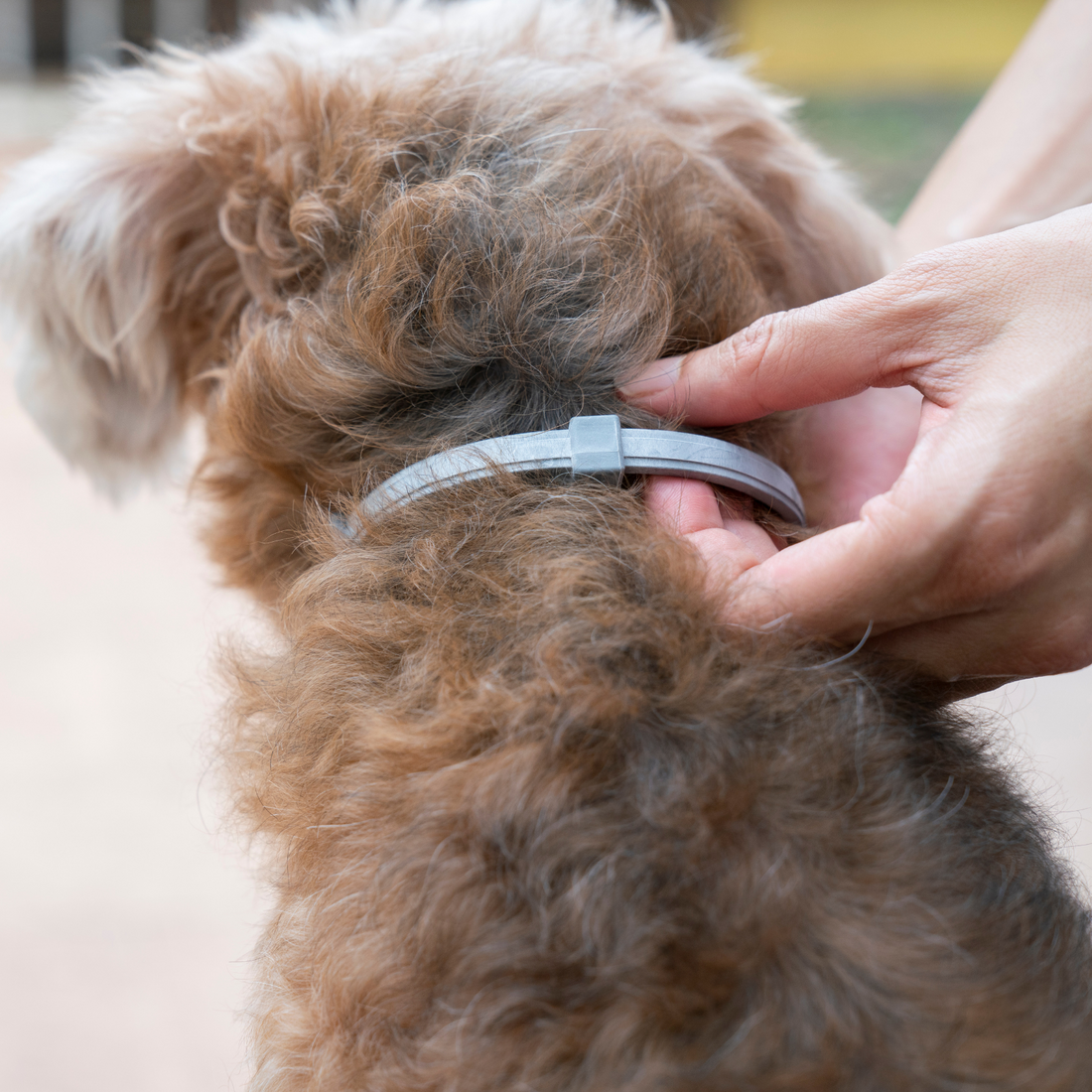
How To Fight Ticks and Fleas on Dogs
Share
Why Are Ticks and Fleas Bad?
Tick-borne disease is a threat to canine, feline, and human health. These small parasites work by attaching themselves to animals and feeding on their blood. A result of this exchange is that these parasites can transmit certain diseases into the host’s body. Not only do these parasites harm pets, but they can also infect their owners too.In the Philippines, the most common flea is known as the Rhipicephalus sanguineus, which can cause several types of disease.
When infected by ticks, your dog can develop diseases such as Anaplasma, Babesiosis, and Mycoplasma which is why it is very important to not only bathe your furry friend, but also routinely check their skin for any ticks. In some cases, ticks from other countries carry paralytic saliva and some may even harbor Lyme disease which can have lasting effects.
What are the symptoms of tick bites?
Anaplasma - “Infection often causes lameness, joint pain, fever, lethargy, and lack of appetite.” source- Sneezing, Coughing, Inflammation of the nose (rhinitis), Eye inflammation (conjunctivitis), Fluid build-up and discharge from the eyes, Difficulty breathing (pneumonia), Infection in the bladder, urinary tract or vagina, Infertility, Joint disease (polyarthritis), General systemic illness (weight loss, fever), Neurological symptoms (meningoencephalitis) source

Why are fleas bad?
Just like ticks, fleas are also parasites that can spread disease to your dog. These diseases can be flea allergy dermatitis, tapeworms, anemia, and bartonellosis.
Flea Allergy Dermatitis
One of the most common reasons why pet owners take their pets to see a vet is due to flea allergy dermatitis. When a flea bites, it can trigger an immune response in your dog which can result into the following:
- Intense skin irritation and itchiness that extending beyond the location of the bites
- Hair loss
- Skin infections
Tapeworms
Dogs scratch themselves with their mouth, which can sometimes end up in them swallowing fleas. If the fleas ingested are infected with tapeworms, your dog will be infected with tapeworms as well.
Anemia
Fleas reproduce at a rapid rate. The more fleas on the dog, the higher the chances they will develop anemia. Symptoms of anemia include weakness, lethargy, rapid breathing and potentially death if the fleas are not removed.
Bartonellosis
“There’s increasing evidence that dogs can be infected with a bacteria called bartonella, which can cause bartonellosis. While the source of infection is not as clear in dogs as in cats, bartonella bacteria infections in dogs have been linked to fleas.
Bartonellosis can cause a number of symptoms in dogs, including fever, nausea or loss of appetite, an irregular heartbeat, vomiting and diarrhea, joint pain or altered brain functions. However, affected dogs typically do not show any clinical signs.”

How do you stop ticks and fleas?
Prevention is the key to maintaining good health. There are several ways to prevent or stop tick and flea infestations. We will be going over several options from homemade remedies all the way to products you can buy on the market.
Wash Your Dog Correctly
Based on the guidelines by the CCSPCA, this is the proper way to wash your dog. Washing your dog correctly is not only hygienic but you can also spot fleas and ticks by doing so.
Brush – Start by brushing out your dog from head to tail. You’ll be removing excess fur and loosening dirt. Brushing also removes knots and matted fur from longer coats that may hold water and irritate their skin.
Use warm water, not hot – Make sure you run your dog’s bath like you would for a baby. Dog’s skin is quite sensitive to heat and using the same temperature water you use will likely be uncomfortably hot for your dog.
Use the right shampoo – As described above, select the appropriate shampoo for your dog and use it sparingly. Massage it into their coats and focus on areas with thick fur or places that tend to be dirtiest. Avoid their eyes, nose, and mouth.
Rinse thoroughly – Make sure to rinse out all of the shampoo. Anything left behind will likely dry their skin. Be gentle when getting your dog wet and when rinsing. Most dogs don’t like being sprayed.


Flea and Tick Collar
We personally use the Flea & Tick Collar that we carry due to the fact that it only uses natural oils as opposed to medicated collars. Some collars may contain harmful chemicals, which we personally wouldn’t use on our dogs because of the pesticides used."Flea collars are plastic collars that pets wear around their necks. The collars kill fleas by slowly releasing pesticides and chemicals that are poisonous to them. There are three types of collars: high frequency, gas-based, and absorption-based."Our collars are not the same as pharmaceutical grade collars for safety. We only use ingredients such as: Citronella oil 50%, Peppermint oil 15%, Lemon oil 15%, Eucalyptus oil 10%, Clove oil 10%. Although medicated collars may be more effective, we personally do not use them because it contains pesticides and other harmful ingredients.
Homemade Natural Spray
We found this great article on how to handle fleas on DC Scientific Pest Control.Looking for a more natural approach? Consider using a homemade flea treatment on your pets to get rid of and prevent fleas. Mix 1 cup of white distilled vinegar, 1 quart of water, and a few drops of an essential oil such as lavender into a large spray bottle. Spray the mixture directly onto your pet, avoiding their face, eyes, and inside ears, and also onto any surfaces your pet lies on or plays with – beds, furniture, blankets, toys, etc. For a natural home flea treatment, mix together 1 gallon white vinegar, ½ gallon water, 2 cups lemon juice, and 1 cup witch hazel into a large spray bottle. After thoroughly cleaning and vacuuming your home, spray the mixture onto carpets, furniture, pet bedding, around windows, baseboards, and any other cracks and crevices where fleas may hide. Use this for at least 2-3 consecutive days, longer for heavily infested areas, or once a week for flea prevention. Another popular, natural flea & tick repellent is Citronella (also a natural mosquito repellent). As part of your cleaning regimen, mop floors with a mixture of 20 drops citronella oil, 10 drops tea tree oil, 10 drops lemongrass oil, 5 drops geranium oil, and 1 gallon of warm water.


